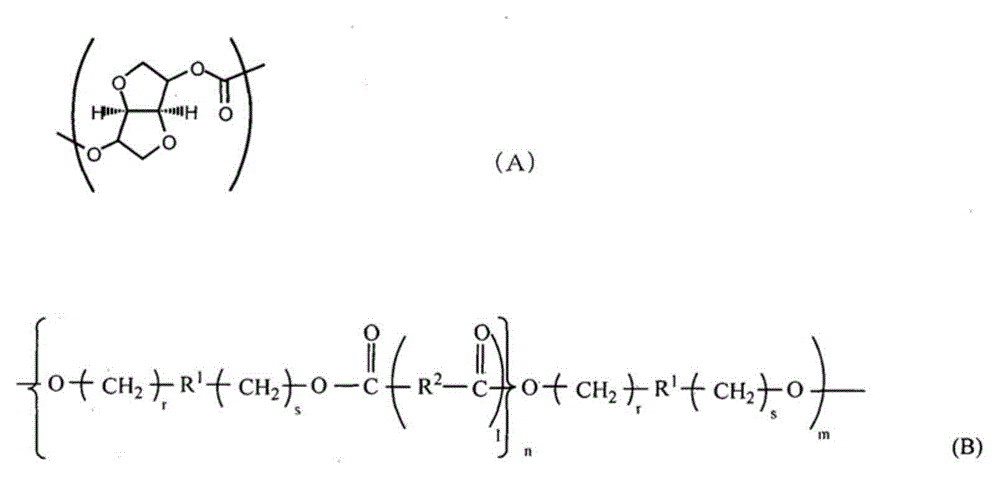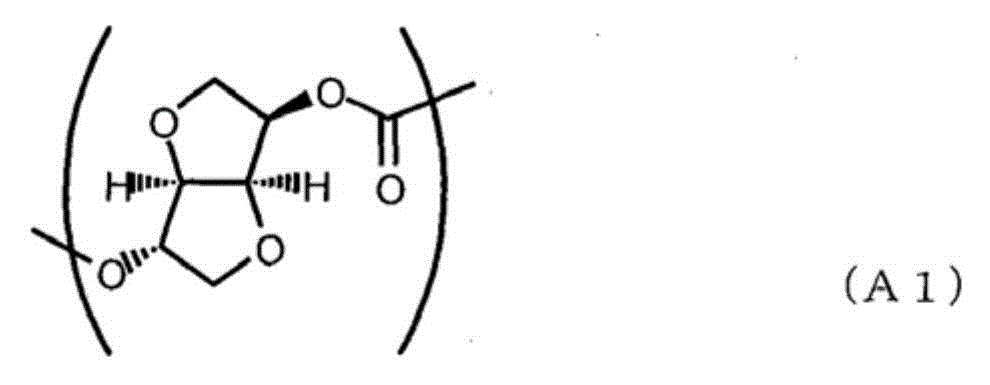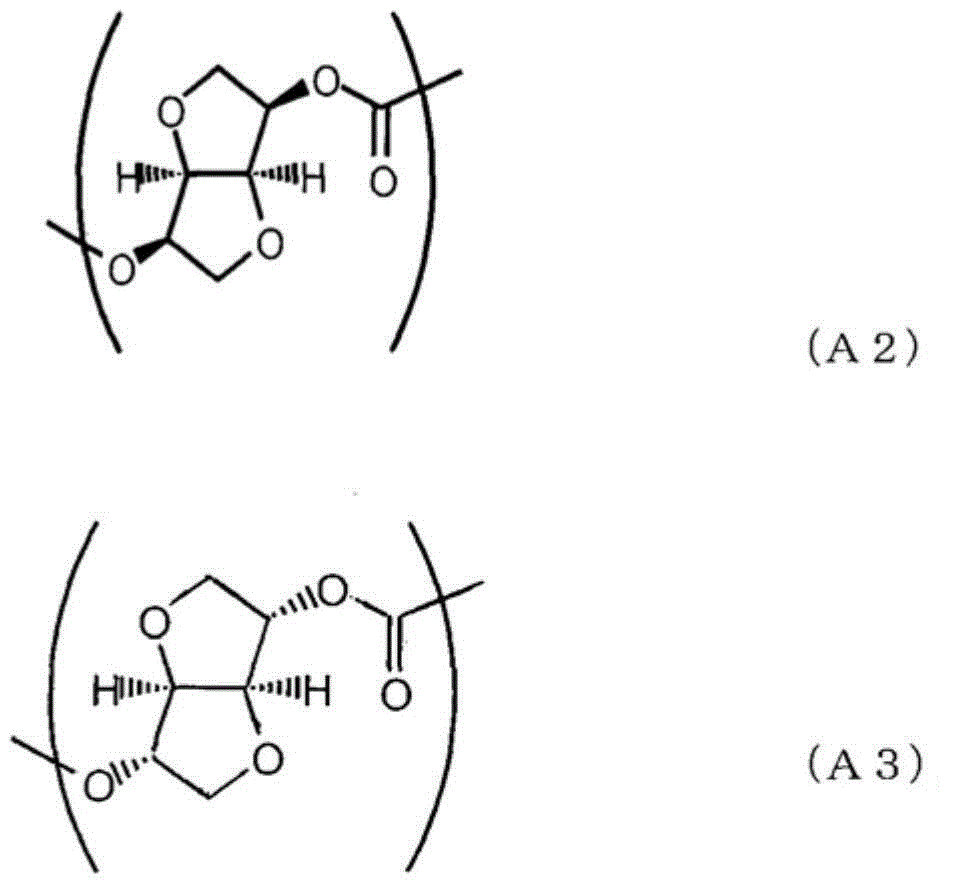Copolycarbonate
一种共聚碳酸酯、碳原子数的技术,应用在共聚碳酸酯领域,能够解决异山梨醇含量少、耐热性低、分子量低等问题
- Summary
- Abstract
- Description
- Claims
- Application Information
AI Technical Summary
Problems solved by technology
Method used
Image
Examples
Embodiment 1
[0333] 436 parts of isosorbide (hereinafter referred to as ISS), 65 parts of 1,8-octanediol (hereinafter referred to as OD), 750 parts of diphenyl carbonate (hereinafter referred to as DPC) and 0.8×10 -2 Parts tetramethylammonium hydroxide and 0.6 x 10 -4 Parts of sodium hydroxide were heated to 180°C under a nitrogen atmosphere to melt it. Thereafter, the degree of reduced pressure was adjusted to 13.4 kPa over 30 minutes. Thereafter, the temperature was raised to 250° C. at a rate of 60° C. / hr, and the temperature was maintained for 10 minutes, and then the degree of reduced pressure was reduced to 133 Pa or less over 1 hour. The reaction was carried out under stirring for a total of 6 hours. After the reaction was completed, it was discharged from the bottom of the reaction tank under nitrogen pressure, and was cut with a granulator while cooling in a water tank to obtain pellets. The evaluation results are described in Table 1.
Embodiment 2
[0335] Except having used 441 parts of ISS, 66 parts of 1,9- nonanediol (it abbreviates as ND hereafter), and 750 parts of DPCs as a raw material, the operation completely the same as Example 1 was performed, and the same evaluation was performed. The results are described in Table 1.
Embodiment 3
[0337] Except having used 71 parts of 1, 10- decanediol (it abbreviates DD hereafter) instead of ND, it carried out completely the same operation as Example 2, and performed the same evaluation. The results are described in Table 1.
PUM
| Property | Measurement | Unit |
|---|---|---|
| glass transition temperature | aaaaa | aaaaa |
| glass transition temperature | aaaaa | aaaaa |
| glass transition temperature | aaaaa | aaaaa |
Abstract
Description
Claims
Application Information
 Login to View More
Login to View More - R&D
- Intellectual Property
- Life Sciences
- Materials
- Tech Scout
- Unparalleled Data Quality
- Higher Quality Content
- 60% Fewer Hallucinations
Browse by: Latest US Patents, China's latest patents, Technical Efficacy Thesaurus, Application Domain, Technology Topic, Popular Technical Reports.
© 2025 PatSnap. All rights reserved.Legal|Privacy policy|Modern Slavery Act Transparency Statement|Sitemap|About US| Contact US: help@patsnap.com



